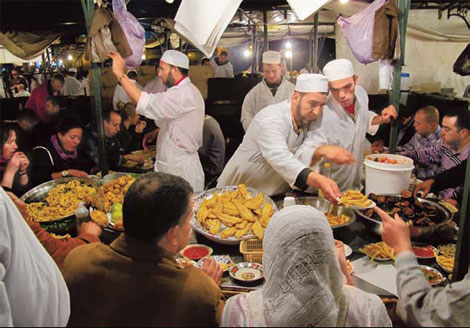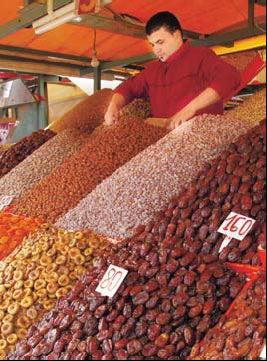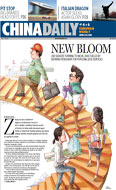Editor’s Pick
Tales to fill a thousand nights
Updated: 2011-02-10 07:53
By Ye Jun (China Daily)
|
The night food markets in Marrakech are packed with tourists and locals. |
Koutoubia Mosque, a city landmark, has a beautifully decorated minaret that stands 70 meters tall. But non-Muslims can only admire it from the outside. From the third floor of Cafe Argan, next to the Djemaa el Fna Square, one can catch a good view of the sometimes snow-capped High Atlas range, the highest mountain in North Africa, while tucking into delectable lamb tagine, besides delicious appetizers made with aubergine, carrot, cabbage, tomato and onion.
|
A Marrakech market overflows with a variety of exotic dry fruits. |
The flavors were so intoxicating that I bought a packet of cumin seeds and ground chili at a supermarket. At the souk near the square, an Indian journalist, who turned out to be a great bargainer, helped me buy a set of beautifully colored glasses, and a silver pot and plate for just 350 dirhams ($42.76).
Another interesting discovery I made was that of a red incense rock at a spice shop. I had read on the Internet that the red walls of the city had been built with an incense stone and I was delighted over my find.
Two Indian journalists and I spent a mere 6 dirhams on a fresh pomegranate at the vegetable market, which must have weighed 1 kg. The ruby-like fruit was unbelievably sweet. The peaches and pears were just a notch lower. Palm dates are another Morrocan specialty, and palm trees can be seen everywhere.
Moroccans are Muslims. Most women wear long robes and head scarves, but only a few also cover their faces. One can tell that it is a relatively open Muslim country. I saw young couples walking hand-in-hand in Marrakech.
With more than 5,000 years of history, Morocco has come under Phoenician, Roman and Byzantine influences, before becoming Islamic in the 7th century. It became a French colony in 1912 and remained so until its independence in 1956. The official language is Arabic, while French is the second-most widely spoken language.
Another highlight of our tour was Fez. The minute you enter its main city gate, blue on the outside and green inside, you will feel like you have traveled several centuries back in time.
Established in the 9th century, Fez was the first imperial capital of ancient Morocco. It is frighteningly easy to get lost in the old city, crisscrossed by numerous narrow, labyrinthine lanes. It was a pity we had only three hours to take a quick walk through the city.
But that was enough for me to get lost - twice.
I was looking at something and taking pictures and the next second when I raised my head, my group had disappeared. Luckily I was calm enough to get back to the starting point and found my group.
We had a quick look at the world's first university, Qarqouiyyin, and the dye house, which let off such a strong smell that our guide offered everyone a mint leaf before going in.
We made brief visits to the Royal Palace of Rabat, and the spectacular Hazzan II Mosque in Casablanca, which is said to be able to accommodate 100,000 people.
Our hosts showed expansive hospitality at our reception, and we were treated to huge pastilles, whole roast lamb, braised chicken, and a great variety of fresh fruits. Despite being a Muslim country, Morocco produces wine that is sold to tourists, and also exported. The wines are made to international standards.
E-paper

Green light
F1 sponsors expect lucrative returns from Shanghai pit stop
Preview of the coming issue
Toy for rich boys
Reaching out
Specials

Share your China stories!
Foreign readers are invited to share your China stories.
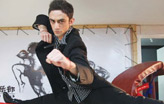
No more Mr. Bad Guy
Italian actor plans to smash ‘foreign devil’ myth and become the first white kungfu star made in China.
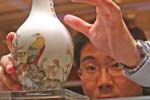
Art auctions
China accounted for 33% of global fine art sales.
